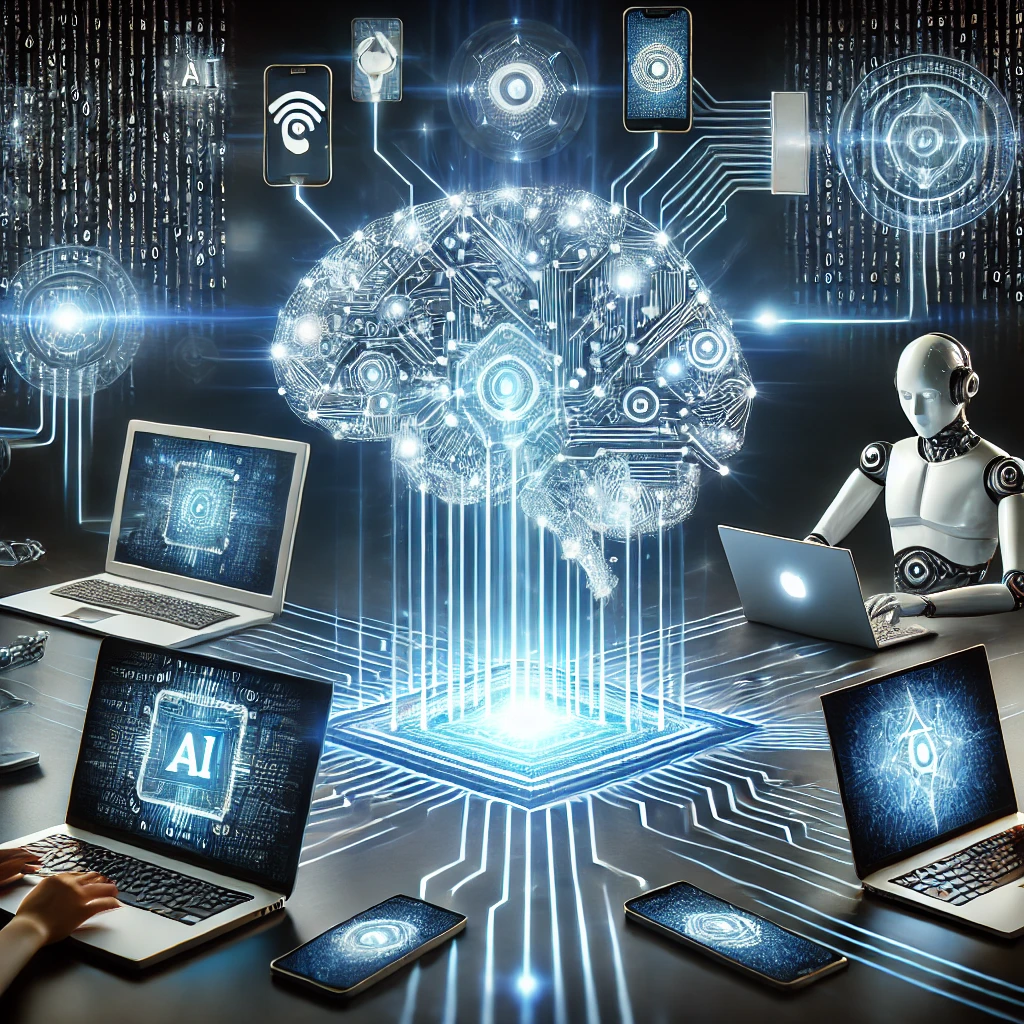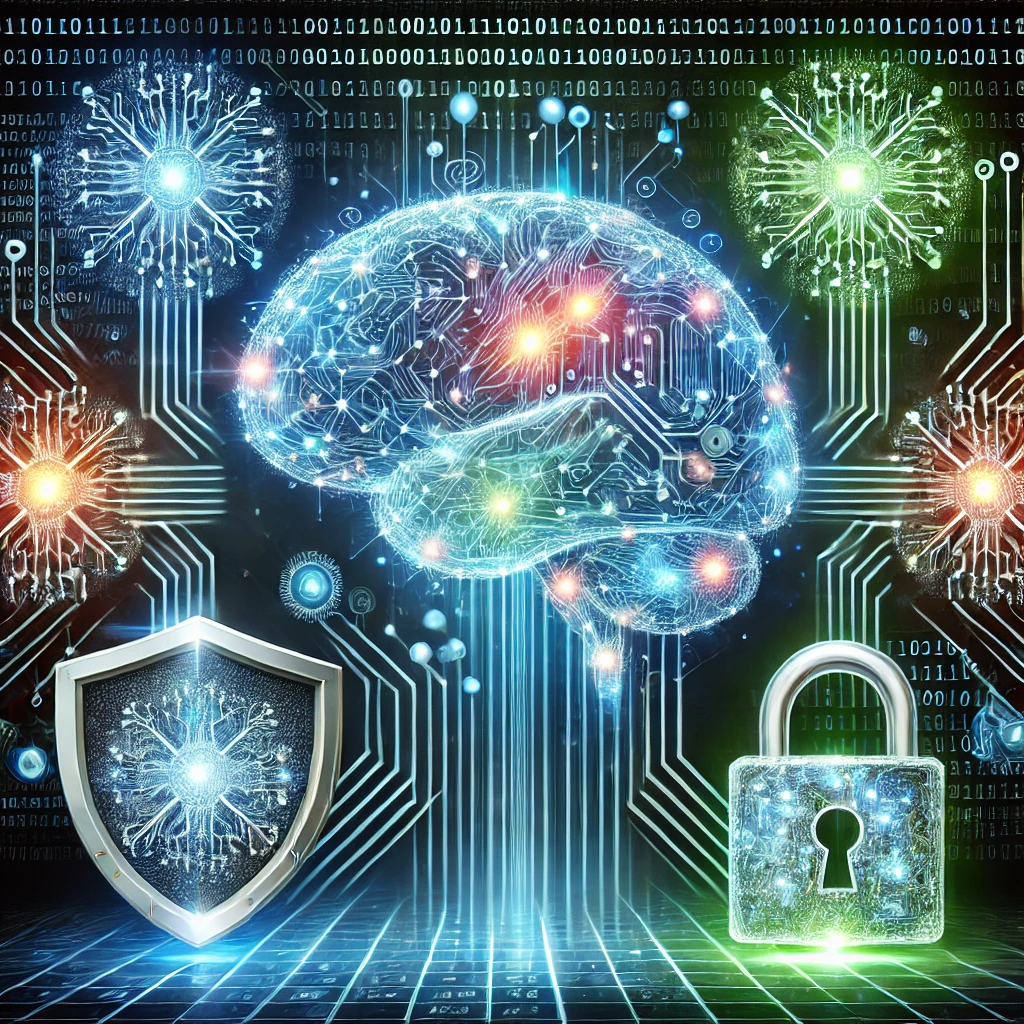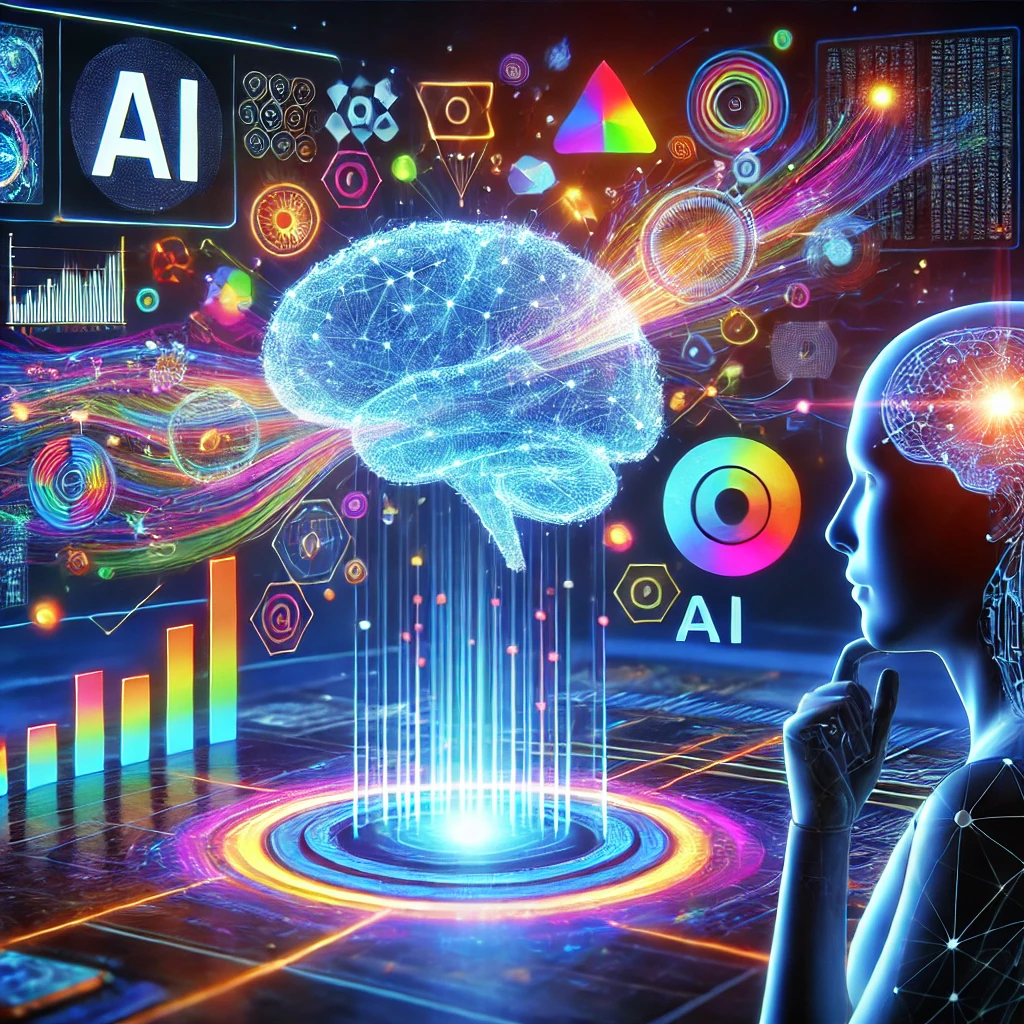Cybersecurity in the Age of AI: Challenges, Innovations, and Future Trends
Cybersecurity in the Age of AI
Introduction
As artificial intelligence (AI) continues to transform industries, it’s also reshaping the world of cybersecurity. AI has become both a powerful ally and a formidable challenge in protecting digital spaces. On one hand, it enhances security systems by detecting threats faster and automating responses. On the other hand, it equips cybercriminals with sophisticated tools, such as AI-generated phishing scams and deepfake technology.
Challenges, Innovations, and Future Trends of Cypersecurity in the of AI
In today’s world, technology evolves at an incredible pace, and artificial intelligence (AI) is at the forefront of this transformation. From enhancing productivity to personalizing online experiences, AI has become an essential tool. But with its rise comes new challenges—especially in cybersecurity. While AI strengthens digital security systems, it also equips cybercriminals with tools to create more sophisticated attacks.In this blog post, we’ll explore how AI is reshaping cybersecurity, the challenges it presents, and the solutions shaping the future of secure digital spaces
The Role of AI in Cybersecurity
AI has revolutionized cybersecurity by providing innovative ways to detect and prevent cyber threats. Traditional security systems relied heavily on human intervention and predefined rules, but AI takes things a step further with machine learning and automation.
Here’s how AI is making a difference:
1. Threat Detection: AI analyzes vast amounts of data in real-time to identify potential threats, such as malware or phishing attempts. For example, AI can detect unusual login patterns and flag suspicious activity.
2. Automated Responses: With AI, organizations can respond to cyberattacks faster. For instance, if an AI system identifies a breach, it can isolate affected systems before damage spreads.
3. Behavioral Analysis: AI studies user behavior over time to establish patterns. If any abnormal activity is detected, such as accessing files outside regular working hours, it triggers an alert.

AI as a Threat to Cybersecurity
Unfortunately, AI isn’t just helping the good guys. Cybercriminals have started using AI to enhance their attacks. Here are some alarming ways they do it:
1. AI-Generated Phishing Scams: Cybercriminals use AI to create highly convincing phishing emails that mimic real communication from trusted sources. These emails are harder to spot and often bypass traditional filters
2. Deepfake Technology: AI-generated deepfake videos and audio are used for scams, impersonating CEOs or officials to steal sensitive data or money.
3. Automated Hacking: AI helps hackers automate attacks, making them faster and more efficient. For example, AI can test thousands of passwords within seconds to breach accounts.
Example: In 2023, hackers used AI-generated voice technology to impersonate a company executive, tricking employees into transferring large sums of money.
Key Challenges in Cybersecurity in the Age of AI
The rise of AI in cybersecurity introduces unique challenges:
1. AI Arms Race: There’s an ongoing battle between cybersecurity experts and hackers, both leveraging AI to outsmart each other. As defenses improve, so do attacks.
2. Difficulty in Detecting AI-Generated Attacks: AI-driven phishing and deepfake scams are highly sophisticated, making them difficult to identify.
3. Ethical Concerns: Using AI for security raises privacy issues. For instance, some tools monitor user behavior, which can feel invasive.
4. Data Vulnerabilities: AI systems rely on large datasets to function. If these datasets are compromised, it can lead to significant breaches..

.
Innovations and Solutions
Despite these challenges, AI is also the key to a more secure future. Here are some innovations addressing cybersecurity threats:
1. AI-Driven Encryption: AI is making encryption more robust by dynamically adapting encryption algorithms based on real-time threats.
2. Biometric Security: Advanced AI-powered biometrics like facial recognition and fingerprint scanning ensure only authorized individuals access systems.
3. Cyber Threat Intelligence: AI gathers and analyzes data from across the internet to predict and prevent potential cyberattacks.
Example: Google’s AI-driven Safe Browsing technology warns users when they’re about to visit malicious websites, protecting millions daily.
The Future of Cybersecurity in the Age of AI
Looking ahead, AI will continue to shape the cybersecurity landscape. Here are some future trends:
1. Quantum Computing: As quantum computers become more powerful, they’ll pose both a threat and an opportunity for cybersecurity. They can break current encryption methods but also enable next-gen security systems.
2. Regulations and Ethical AI: Governments and organizations will need to develop frameworks to regulate AI use in cybersecurity, ensuring it’s used responsibly.
3. Increased Demand for AI Experts: The cybersecurity industry will see a growing demand for professionals skilled in AI to build and manage advanced security systems.

Conclusion
AI has brought both exciting opportunities and serious challenges to the world of cybersecurity. While it empowers organizations to detect and prevent attacks more effectively, it also equips hackers with advanced tools to exploit vulnerabilities.
The key to navigating this dual impact lies in staying informed, investing in cutting-edge AI solutions, and adopting proactive security measures. As AI continues to evolve, businesses and individuals must work together to build a safer digital future.
Stay ahead in the age of AI by investing in the latest cybersecurity technologies and educating yourself about potential threats. A secure future starts with informed choices today.
